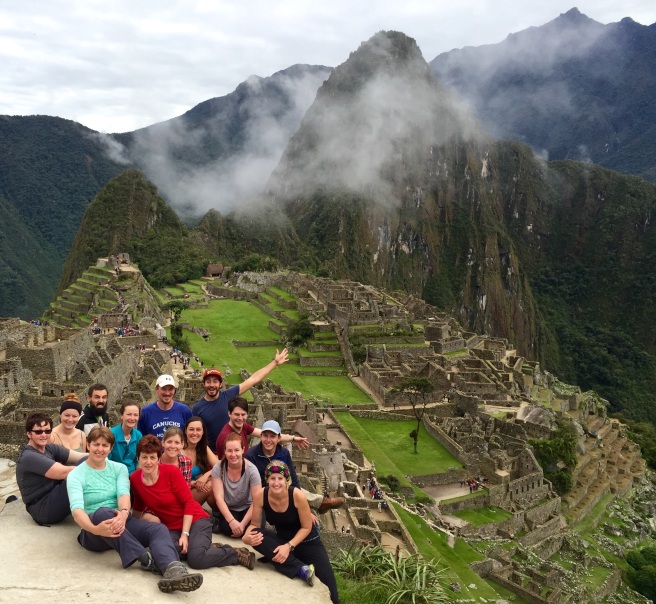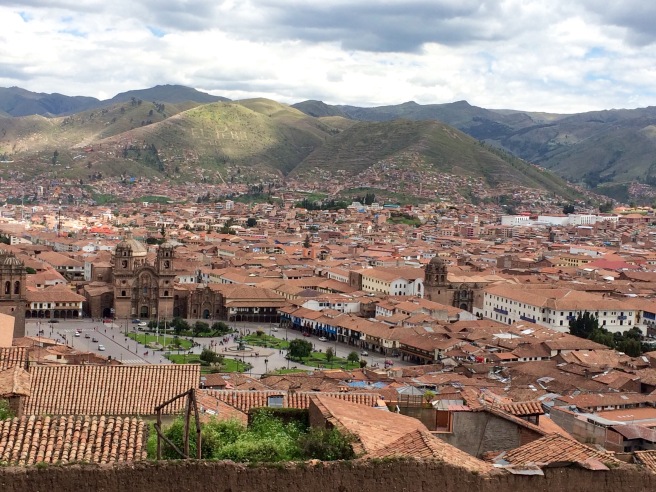I have always been rather disdainful of the Americans.
Not in a hating or malicious way but in the same look-down-my-nose-and-snigger-condescendingly way as many Europeans.
It is not something I am proud of, that “ah yes, the Americans, how silly they are with their ‘have a nice days’, their worship of unregulated capitalism, their crazy gun control laws, their lack of a national health system, their religious nuts, their ostentatious wealth, their ostentatious poverty, their love of unnecessarily massive cars, their belief that a mere 100 years’ existence qualifies a building as rare and historic” kind of attitude… I could go on.
In my defence, it is true that many Americans do display the kind of naive arrogance that can only come with having grown-up in a world superpower which models them into patriots from babyhood onwards. They have to pledge allegiance to their nation every morning in school for God’s sake – the only way that could ever happen in Britain is if UKIP came to power.
Yes, unlike us Brits who eschew national pride in favour of piss-taking and pints, the Americans often demonstrate an earnest, unquestioning belief that their country and way of life are simply superior to the rest of the world and that they are doing the rest of the world a kindness by bestowing (or imposing) their knowledge and values upon less fortunate nations. They are the modern Victorians.
As one who grew up in a country which was until really quite recently also an arrogant world superpower but is now a weary and cynical has-been able to see what damage its earlier imperial self wreaked during global domination, I have only ever felt able to shake my head in resignation at this well-meaning misguided attitude.
Even descriptions of the Americans’ abounding friendliness have always sounded fake.
“Give me a grumpy Frenchman telling me, at 1.31pm, that his restaurant stopped serving lunch at 1.30pm. At least he says what he means”, I’ve stubbornly argued.
Then I went to America, or to one tiny part of that massive continent which poses as a country, and I fell madly in love with the Americans.
I was forced to cast off all my cynicism, my disdain, my British superiority, by the overwhelming realisation that America is populated by the most charming people on earth.
A lifetime’s preconceptions stamped out, thanks to a brief stop-off in Miami to see some friends on the way home from Cartagena.
Ah, Miami. The city welcomed us in its sunny Art Deco arms and whirled us through four days of neon lit and cocktail fuelled fun before packing us off home to grey Britain, where clearly we belong.
Maybe it is just Miami, maybe just the ‘sunshine state’ of Florida, maybe this is not representative of every single one of those 50 united states but the whole place fizzes with goodwill and optimism.
People greet you in the street, in the lift, in the hallway. Shop assistants are so kind and helpful you positively want to spend more money. Waiters offer you advice on far more than simply the restaurant menu.
People go out of their way to help you and ensure you do indeed “have a nice day”. And it works.
Their friendliness is not fake, it is not cloying, it simply brightens your mood and makes your daily existence that bit more enjoyable.
Happiness, like misery, is infectious.
Suddenly that cool surliness which the northern Europeans have turned into a sort of art form just seems faintly risible. Life can be so pleasant when everyone goes out of their way to make it so.
Often of course, it is just good service. As my friend Harry, who we were staying with, said: “Here, they really have perfected the art of persuading you to willingly and cheerfully part with your money.”
But this almost laughable niceness is not just tied to money-making because it comes from everyone, your Uber taxi driver to the guy queuing behind you in the cafe.
It would, however, be difficult not to feel cheerful in Miami, a city where the temperature rarely dips below 20C and the white sand beaches stretch for several miles.
Miami is bright, kitsch and ridiculous and it doesn’t try to be anything else. There is no pretence at sophistication or class. It is unashamedly tacky and undeniably fun.
The bars along Miami South Beach sell cocktails in glasses large enough to feature in an aquarium. EDM – to a Brit just ‘dance music’ – blasts out onto the sidewalk deafening passers-by while semi-naked women dance on podiums throughout the day and night. People of every style and dimension can be admired on South Beach where wannabe glamour models’ boob jobs compete with the rippling pecks of perma-tanned gay men. The warm sea is a perfect Caribbean turquoise.
Our wonderful hosts Harry and Jess, both Brits who have been living in Miami for a couple of years, have definitely eaten from the tree of truth.
“You know that sort of festival feeling you get in London on a really hot sunny day, where everyone flocks to the parks and everyone is just happy and upbeat,” said Harry. “Here it sort of feels like that all the time.”
It is amazing what a difference good weather makes.
Another startling difference between our cramped isles and American way of life is simply the amount of space available.
Harry and Jess moved from the usual claustrophobic London shoebox to a swanky spacious two-bedroom apartment on the 43rd floor of a condo building in downtown Miami with glass walls on three sides offering views of towards the beach, the business district and beyond.
They have a swimming pool on either side of the tower block, one which catches the dawn sun and the other for use at sunset.
Their building, which is a fairly average size when compared with the many others in downtown Miami, is 50 storeys high. One Canada Square in Canary Wharf, until five years ago the tallest building in Britain, is 50 storeys high.
But in America, everything is bigger.
Normal roads here are three lanes wide, most of the cars wouldn’t fit down many London streets. I have already mentioned the size of the cocktails.
Over four days we met lovely people, we ate in fantastic restaurants, we had Bloody Mary’s and Mimosas at breakfast, we meandered in the sunshine and frolicked on the beach. I defy anyone to dislike Miami.
On Monday, when Harry and Jess returned to work, P and I rented a Mustang GT and drove down to the Florida Keys as far as Seven Mile Bridge – the clue is in the name.
This 120-mile spit of sand with its chain of tropical islands which clings precariously to the tip of Florida is a spectacular drive.
Just when we thought our love for Miami could not be bettered, a huge manatee swam up to the dockside of a small harbour where we happened to have stopped and poked its whiskered nose out of the water to say hello.
That evening as we drove back to the city for our final night we stopped at a small waterside bar and sat on a wooden jetty watching the red sun sink towards the still waters. P and I drank down cold beers while the silhouette of a small sailing dinghy luffed across the pink horizon. Larger yachts bobbed on their moorings. The melodic tones of a live singer performing Jonny Cash floated over from the bar next door. The sun sank lower so the tips of the wavelets sparkled gold. Seagulls skirted across the water. The warm air tickled my bare arms.
God bless America, I thought.


